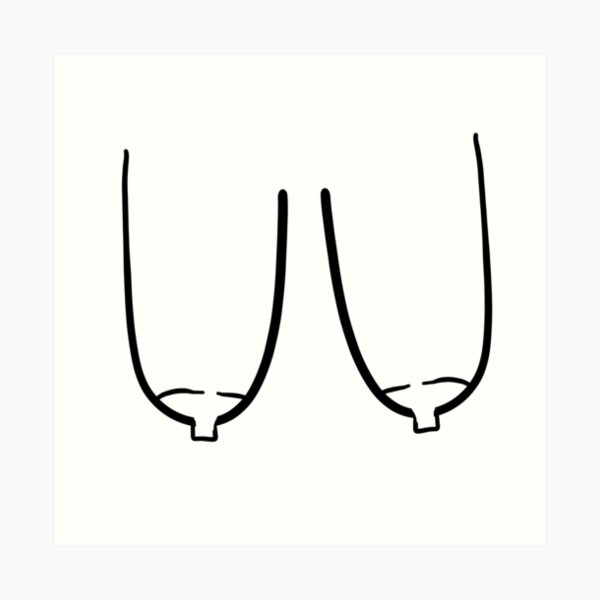List Of Drugs That Can Cause Saggy Tits (Breast Ptosis)

Breast ptosis, commonly known as “saggy tits,” refers to the drooping of the breasts due to a loss of elasticity in the skin and ligaments that support the breast tissue. While breast ptosis is a natural and common occurrence that happens to most women as they age, it can also occur due to factors such as pregnancy, weight fluctuations, genetics, and certain medical conditions.
The severity of breast ptosis is classified into three grades based on the position of the nipple relative to the breast crease: Grade 1, where the nipple is at or above the breast crease; Grade 2, where the nipple is below the breast crease; and Grade 3, where the nipple is pointing downward.
“Saggy tits,” is a common occurrence, it happens to most women as they age. In fact, a study published in the Aesthetic Surgery Journal in 2018 found that nearly 70% of women experience some degree of breast ptosis as they get older. However, the severity of breast ptosis can vary widely, and it can also be influenced by factors such as genetics, weight fluctuations, and pregnancy. It’s worth noting that breast ptosis can occur in women of any age, not just older women, and it can have a significant impact on a woman’s self-esteem and body image.

Drugs that can Cause Saggy Tits (Breast Ptosis)
Certain drugs can also contribute to huge or long saggy tits or breast ptosis by affecting the skin and connective tissue that support the breasts. Here are some drugs that have been reported to cause saggy tits:
1. Hormonal contraceptives: Birth control pills contain synthetic versions of the hormones estrogen and progestin. These hormones can affect the amount and distribution of body fat, including breast tissue. When taken over a long period of time, birth control pills can alter the levels of these hormones in the body, which can affect the elasticity of the skin and connective tissue in the breasts.
Estrogen is known to stimulate the growth of breast tissue, while progestin can cause the milk ducts in the breasts to dilate. These changes in breast tissue can lead to an increase in breast size, but can also cause the breasts to lose their firmness and elasticity over time.
In addition, some women may experience weight gain while taking birth control pills, which can also contribute to breast sagging. When body weight increases, the skin and connective tissue in the breasts may stretch, causing them to lose their shape and firmness.
It’s important to note that not all women who take birth control pills will experience breast sagging, and the risk may be influenced by factors such as age, genetics, and lifestyle habits.
2. Hormone replacement therapy (HRT): HRT is used to relieve symptoms of menopause by replacing the hormones that the body no longer produces. Hormone replacement therapy (HRT) is a treatment that involves taking hormones to replace those that the body no longer produces, typically used to alleviate symptoms of menopause. HRT typically involves taking a combination of estrogen and progesterone, or estrogen alone.
Estrogen is known to stimulate breast tissue growth and development, but long-term use of HRT can lead to a decrease in the production of collagen and elastin, two proteins that are essential for maintaining the elasticity of the skin and connective tissue in the breasts.
As a result, the breasts may lose their firmness and elasticity, and sag over time. Additionally, HRT may increase the risk of breast cancer, which can also contribute to breast sagging.
The degree to which HRT may cause sagging breasts can vary depending on the individual, the duration of treatment, and the dosage of hormones used. Women who have taken HRT for a long time or at high doses may be at greater risk of developing breast sagging.
3. Antidepressants: Some antidepressants, particularly selective serotonin reuptake inhibitors (SSRIs), can cause changes in body weight, which may contribute to breast sagging. Antidepressants can increase appetite and lead to weight gain, which can cause the skin and connective tissue in the breasts to stretch and lose their elasticity, leading to breast sagging.
In addition to weight gain, some antidepressants may also affect levels of hormones and neurotransmitters in the body, which can impact breast tissue. For example, the hormone prolactin, which is involved in breast development and lactation, may be elevated in some people taking antidepressants, which could contribute to breast enlargement and sagging.
It’s important to note that not all antidepressants cause breast sagging, and the risk may vary depending on the individual and the type and dose of antidepressant used. Other factors, such as genetics and age, may also contribute to breast sagging.
4. Corticosteroids: These drugs are a class of drugs that are used to treat inflammation and immune system disorders, such as asthma, rheumatoid arthritis, and lupus. Long-term use of corticosteroids can cause thinning of the skin and loss of collagen, which can lead to sagging breasts and changes in breast shape.
Corticosteroids can also cause weight gain and redistribution of body fat, which can cause the breasts to become larger and heavier. Over time, the increased weight of the breasts can stretch the skin and connective tissue, causing the breasts to sag and become elongated.
In addition, corticosteroids can affect hormone levels in the body, which can impact breast tissue. For example, corticosteroids can reduce the production of estrogen, a hormone that is important for breast development and maintenance of breast tissue health. This reduction in estrogen levels can contribute to breast sagging.
5. Antipsychotics: These are medications used to treat psychiatric disorders such as schizophrenia and bipolar disorder. These drugs work by blocking dopamine receptors in the brain. However, blocking dopamine receptors can also affect the production of the hormone prolactin, which is involved in breast development and lactation.
Antipsychotic drugs can cause elevated levels of prolactin, leading to breast enlargement and sagging. Prolactin levels can also affect the production of collagen and elastin, two proteins that are essential for maintaining the elasticity of the skin and connective tissue in the breasts. Over time, the reduction of collagen and elastin can cause the breasts to sag.
In addition, antipsychotic drugs can cause weight gain and changes in body composition, which can also contribute to breast sagging. As body weight increases, the skin and connective tissue in the breasts may stretch, causing them to lose their shape and firmness.
It’s important to note that not everyone who takes these drugs will experience breast ptosis, and other factors may contribute to sagging breasts. If you are concerned about changes in the appearance of your breasts, you should speak with your healthcare provider.
How To Prevent Drug-Induced Breast Sagging
Preventing drug-induced breast sagging can involve a combination of lifestyle changes and medical interventions. Here are some ways to help prevent breast sagging caused by drugs:
- Maintain a healthy weight: Excessive weight gain can cause the skin and connective tissue in the breasts to stretch, leading to sagging. A healthy diet and regular exercise can help you maintain a healthy weight and prevent breast sagging.
- Stay hydrated: Drinking plenty of water can help keep your skin healthy and elastic, which can help prevent breast sagging.
- Wear a supportive bra: Wearing a properly fitting bra can help support the breasts and prevent sagging. A sports bra can also provide additional support during exercise.
- Avoid smoking and excessive alcohol consumption: Smoking and excessive alcohol consumption can contribute to skin damage and reduce skin elasticity, leading to breast sagging.
- Talk to your healthcare provider: If you are taking medication that may increase your risk of breast sagging, talk to your healthcare provider about the potential risks and benefits of the medication. They may be able to adjust your medication or recommend alternative treatments to reduce your risk.
- Consider hormone replacement therapy (HRT): This may sound contradictory but it is true. If you are experiencing symptoms of menopause, HRT may help alleviate symptoms and prevent breast sagging by maintaining hormone levels.
- Use topical treatments: Some topical treatments, such as retinoids and vitamin C serums, can help improve skin elasticity and prevent breast sagging.
It’s important to note that breast sagging can also be caused by factors such as genetics, age, and pregnancy and may be difficult to completely prevent. However, making lifestyle changes and seeking medical interventions can help reduce your risk of breast sagging caused by drug use.





